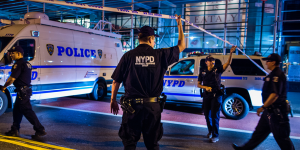Emergency Cellphone Alerts Are Outdated
September 19, 2016

News blog cites research by Brooke Fisher Liu on federal wireless emergency alert system.
Carl Bialik | Five Thirty Eight
Citing research by associate Professor of communication Brooke Fisher Liu, the data-centric news blog Five Thirty Eight reported on the limitations of the federal Wireless Emergency Alert system:
"Millions of New Yorkers got alerts delivered to their cellphones Monday morning seeking information about a suspect in Saturday’s bombing in the city’s Chelsea neighborhood. The technology that enabled the instant mass message was 15 years in the making — and the alerts’ limitations show just how much further the country’s emergency alert system needs to go to deliver timely, useful, actionable information.
"As law-enforcement agencies gathered clues Monday morning, New York Police Department Assistant Commissioner Peter Donald contacted the city’s Office of Emergency Management, which coordinates alert communications, for help getting the word out about a suspect whom the NYPD feared could plan more bombings. OEM officials agreed to use the federal Wireless Emergency Alerts (WEAs) system, which authorizes them to transmit information about a suspect to smartphones — just the sixth time they’d blasted messages citywide. They sent this message just before 8 a.m.: 'WANTED: Ahmad Khan Rahami, 28-yr-old male. See media for pic. Call 9-1-1 if seen.'"
"It also isn’t clear whether the alerts are effective. The system is decentralized, which equips agencies such as OEM to send messages quickly but also makes it hard to study their impact because researchers say there is no nationwide archive for messages. A 2015 report from the National Consortium for the Study of Terrorism and Responses to Terrorism at the University of Maryland found that alerts would be more effective at longer lengths and with the inclusion of a “local and recognizable” source of information (which New York’s alert on the bombing suspect didn’t include)."
Read the entire blog post at Five Thirty Eight.
Photo: Police arrive on the scene of an explosion in Manhattan's Chelsea neighbourhood, in New York, Saturday, Sept. 17, 2016 | AP Photo by Andres Kudacki via Five Thirty Eight

